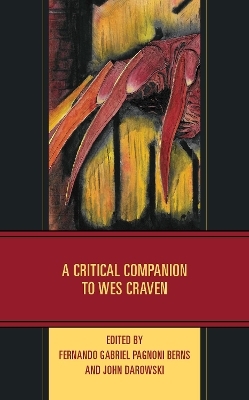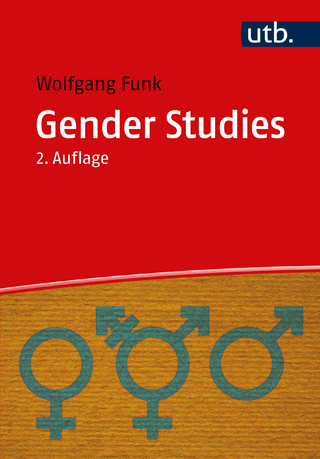
A Critical Companion to Wes Craven
Lexington Books/Fortress Academic (Verlag)
978-1-6669-1906-6 (ISBN)
In A Critical Companion to Wes Craven, contributors use a variety of theoretical frameworks to analyze distinct areas of Craven’s work, including ecology, auteurism, philosophy, queer studies, and trauma. This book covers both the successes and failures contained in Craven’s extensive filmography, ultimately revealing a variegated portrait of his career. Scholars of film studies, horror, and ecology will find this book particularly interesting.
Fernando Gabriel Pagnoni Berns is professor of international horror film at Universidad de Buenos Aires–Facultad de Filosofía y Letras. John Darowski is a PhD candidate in comparative humanities at the University of Louisville.
Table of Contents
Introduction. Fernando Gabriel Pagnoni and John Darowski
Part I: Space, Time, Urbanities
1.“Destabilizing Safety: Space, Place, and Risk in Craven’s Last House on the Left, A Nightmare on Elm Street, and Red Eye.” Jacob Babb
2.““What If?” The Unrealized in Wes Craven’s The Twilight Zone (1985) and Nightmare Cafe.” Emiliano Aguilar
3.“Ruined Landscapes, the EcoGothic and Eco-Horror in the Early Films of Wes Craven: Last House on the Left, The Hills Have Eyes, Deadly Blessing, Swamp Thing, The Hills Have Eyes II.” Michael Stock
4.“Nowhere Is Safe: Suburban Terror in A Nightmare on Elm Street, Shocker and Scream.” Daniel P. Compora
Part II: Traumatic Aspects
5. “Teenage alienation and Fractured Identities: Re-evaluating Wes Craven’s My Soul to Take.” Reece Goodall
6.“Wes Craven and BIPOC Horror: Contrasting The People Under the Stairs with The Possession of Joel Delaney.” Joshua W. Katz, Taksala Abeygunawardena, Natalie O’Reilly, Brenan R.R. Smith and Todd G. Morrison
7.“Dismembering Craven’s The Last House on the Left: Excavating Structures of Whiteness in the American Horror Film.” Stephanie Chang
Part III: The Authorial Voice
8. ““Not in My Movie”: Parodic Transformations of Wes Craven’s Final Girl in the Narrative and Soundtrack of Scream.” Joel Kirk
9. “Welcome to Prime Time: Wes Craven’s Television Films.” Will Dodson
10.“Practical Magic: The Role of Practical Special Effects in Creating Fear.” Kat Albrecht
11.“The Most Dreadful of Horrors: Studio Interference and Authorship in The Fireworks Woman (1975), Vampire in Brooklyn (1995) and Cursed (2005).” Fernando Gabriel Pagnoni Berns and Eduardo Veteri
12. “Recombinant Narrative: Wes Craven, Adaptation, and Swamp Thing.” John Darowski
Part IV: Sociological/Philosophical Inquiries
13.“Wes Craven’s Monsters of Capitalism.” Eric Brinkman
14.“Beyond Freddy’s Revenge: Wes Craven’s Slasher Films as Queer Texts.” Ezra Brain and Olivia Wood
15.“Transgressing the Boundaries of Faith: Belief Systems, Evil and the Human Subject in Wes Craven Films.” Sony Jalarajan Raj and Adith K. Suresh
16.“Rubber Reality and its Variations in the Films of Wes Craven.” Brian Keiper
17.“Screaming for Relevance: Reflecting on Scream 4 in the Age of Influencers,” Andrew Smith
About the Contributors
| Erscheinungsdatum | 20.07.2023 |
|---|---|
| Reihe/Serie | Critical Companions to Contemporary Directors |
| Co-Autor | Taksala Abeyguawardena, Emiliano Aguilar, Kat Albrecht |
| Sprache | englisch |
| Maße | 158 x 237 mm |
| Gewicht | 626 g |
| Themenwelt | Geisteswissenschaften ► Philosophie |
| Sozialwissenschaften ► Soziologie ► Gender Studies | |
| ISBN-10 | 1-6669-1906-3 / 1666919063 |
| ISBN-13 | 978-1-6669-1906-6 / 9781666919066 |
| Zustand | Neuware |
| Informationen gemäß Produktsicherheitsverordnung (GPSR) | |
| Haben Sie eine Frage zum Produkt? |
aus dem Bereich


